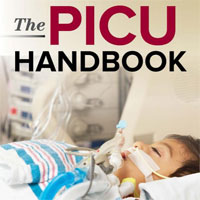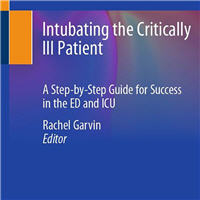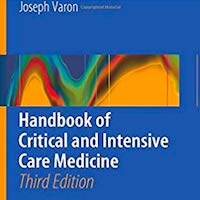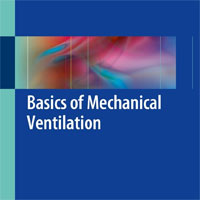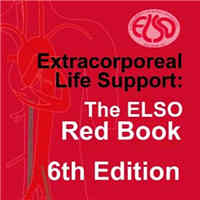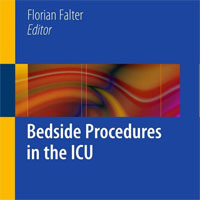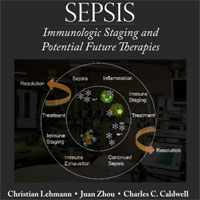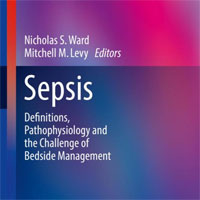Tag: SOFA
Elective Tracheostomy During COVID-19: To Whom, When, How?
We suggest to wait at least 14 days to perform tracheostomy. In patients with SOFA score > 6 and D dimer > 4, tracheostomy should not be performed or should be postponed. Optimized procedures and enhanced personal... read more
Copeptin as a Marker of Outcome After Cardiac Arrest
Copeptin is an independent marker of severity of the post cardiac arrest syndrome, partially related to circulatory failure. 690 patients were included in the analyses, of whom 203 (30.3%) developed cardiovascular deterioration... read more
Risk Factors for the Development of ARDS in Mechanically Ventilated Adults in Peru
In this study of mechanically ventilated patients, 31% of study participants had acute respiratory distress syndrome (ARDS) at some point during their ICU stay. Optimal lung-protective ventilation was not used in a majority... read more
Correlation Among Endothelial Injury, Organ Dysfunction, and Several Biomarkers in Sepsis Patients
Protein C was superior for the prediction of organ dysfunction after 7 days of ICU treatment when compared with other biomarkers of endothelial function, inflammation, and coagulation. C-reactive protein (CRP) and white blood... read more
Abnormalities in the Host Immune Response During Hospitalization for Sepsis
In this cohort study of 483 patients who survived hospitalization with sepsis at 12 US hospitals, 25.8% had elevated high-sensitivity C-reactive protein levels (a marker of inflammation) at 3 months, 30.2% at 6 months, and... read more
Triage and Flow Management in Sepsis
Septic patients had a lower priority for ICU admission and longer waiting times for an ICU vacancy than patients with other critical conditions. Overall, this implied a 2.7-fold increased risk of mortality in septic patients. The... read more
Are Antibiotics for Sepsis in One Hour Feasible in the ED?
In this single-center study, implementation of sepsis protocols designed to expedite bundle delivery resulted in only a small fraction of patients receiving antibiotics within 1 hour of triage. This study validates the... read more
Biomarkers and Clinical Scores to Identify Patient Populations at Risk of Delayed Antibiotic Administration or Intensive Care Admission
Patients with low severity signs of infection but high MR-proADM concentrations had an increased likelihood of subsequent disease progression, delayed antibiotic administration or ICU admission. Appropriate triage decisions... read more
CytoSorb Associated with Decreased Observed vs. Expected 28-day All-cause Mortality in ICU Patients with Septic Shock
CytoSorb was associated with a decreased observed versus expected 28-day all-cause mortality. By IPTW analysis, intervention with CytoSorb may be associated with a decreased all-cause mortality at 28 days compared to CRRT... read more
Impact of Delayed Admission to ICUs on Mortality of Critically Ill Patients
When the number of patients who require intensive care is greater than the number of beds available, intensive care unit (ICU) entry flow is obstructed. This phenomenon has been associated with higher mortality rates... read more
Critically Ill Patients Show a Differential Contractile Response to Neuromuscular Electrical Stimulation
This retrospective sub-analysis aimed to outline the characteristics of, as well as predictors for, a contractile response to Neuromuscular Electrical Stimulation (NMES), and also potential clinical benefits resulting from... read more
Platelet Function During ECMO in Adult Patients
Employing impedance aggregometry and flow cytometry, we found both impaired platelet aggregation and decreased platelet activation on day 1 of Extracorporeal Membrane Oxygenation (ECMO) support compared with healthy controls.... read more
Ineffectiveness of Procalcitonin-Guided Antibiotic Therapy in Severely Critically Ill Patients
Procalcitonin-guided (PCT) antibiotic therapy fails to decrease the mortality or length of stay (LOS) of critically ill patients with suspected or confirmed sepsis. PCT-guided cessation of antibiotic therapy could reduce... read more
Derivation and Validation of Plasma Endostatin for Predicting Renal Recovery from AKI
Plasma endostatin shows a useful value for predicting failure to recover from acute kidney injury (AKI). The predictive ability can be greatly improved when endostatin is combined with the Sequential Organ Failure Assessment... read more
Clinical Examination for the Prediction of Mortality in the Critically Ill
Clinical examination has reasonable discriminative value for assessing 90-day mortality in acutely admitted ICU patients. In our study population, a single, protocolized clinical examination had similar prognostic abilities... read more
Estimated Effects of Early Diuretic Use in Critical Illness
The main objectives of this study was to estimate the effects of diuretic use during the first 24 hours of an ICU stay on in-hospital mortality and other clinical outcomes including acute kidney injury (AKI) and duration... read more
Sepsis Surveillance Using Adult Sepsis Events Simplified eSOFA Criteria Versus Sepsis-3 Sequential Organ Failure Assessment Criteria
Sepsis-3 defines organ dysfunction as an increase in the Sequential Organ Failure Assessment score by greater than or equal to 2 points. However, some Sequential Organ Failure Assessment score components are not routinely... read more
Time-Course of Clinical Physiologic Variables in ARDS Patients Undergoing ECMO
In patients undergoing extracorporeal membrane oxygenation (ECMO) for acute respiratory distress syndrome (ARDS), it is unknown which clinical physiologic variables should be monitored to follow the evolution of lung injury... read more
Effective Sepsis Detection with Peripheral Blood Monocyte Distribution
This study evaluated the diagnostic accuracy of peripheral blood monocyte distribution width alone and in combination with white blood cells (WBCs) count for early sepsis detection in the emergency department. An monocyte... read more
Defining Sepsis on the Wards
The aim of this study is to look at the prevalence (commonness) of sepsis across acute hospitals (hospitals with an emergency department) across Wales using the currently used and new definitions of sepsis. Sepsis is a major... read more
Positive Outcomes, Mortality Rates, and Publication Bias in Septic Shock Trials
Out of 65 eligible septic shock trials, 14 did not have a clearly defined control group (two standards of care were compared) and were excluded. For the 51 remaining trials, control-group mortality ranged between 15.9%... read more
Describing Organ Dysfunction in the ICU
Multiple organ dysfunction is a common cause of morbidity and mortality in intensive care units (ICUs). Original development of the Sequential Organ Failure Assessment (SOFA) score was not to predict outcome, but to describe... read more


